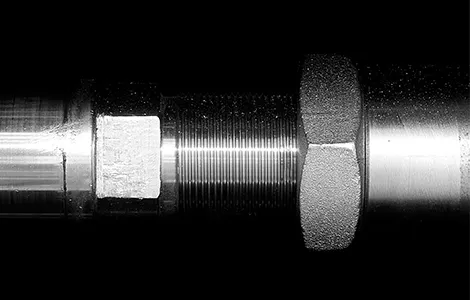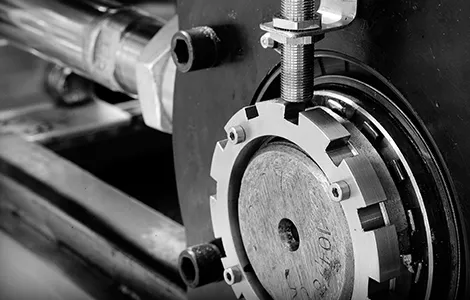Wire Mesh Belts Explained: Uses, Benefits, and Applications
August 07, 2025
In sectors where efficiency, durability, and hygiene are essential, wire mesh belts play a vital role in ensuring smooth, consistent production. Their open construction, high strength, and resistance to extreme operating conditions make them a trusted solution for diverse industrial applications.
While their use is well established in industries like food processing, metal treatment, and manufacturing, their versatility continues to expand. In this blog, we take a detailed look at what wire mesh belts are, their key advantages, and how they support high-performance production systems.
What Are Wire Mesh Belts?
A wire mesh conveyor belt is constructed from interlinked metal wires, often stainless steel, woven or looped together to form a robust, open-mesh surface. This unique structure delivers both flexibility and strength, allowing the belt to run smoothly over conveyor components while providing essential airflow and drainage.
The open design is particularly beneficial in processes that require temperature regulation or exposure to liquids, as it enables even heating, cooling, and washing.
The use of stainless steel wire mesh belts also ensures excellent corrosion resistance, long service life, and consistent performance, even under the pressure of continuous operation.
Key Benefits of Wire Mesh Belts
Wire mesh belts have a reputation for delivering reliability in environments where other belt types may degrade quickly or require frequent maintenance. Their benefits extend across mechanical performance, process efficiency, and operational costs.
Temperature Resistance: Wire mesh belts can operate in extreme temperatures, from the heat of industrial ovens to the cold of freezing tunnels. This makes them ideal for processes like baking, heat treatment, or rapid cooling.
Airflow and Drainage: The open mesh allows continuous airflow, which is essential for drying or cooling applications. Liquids can also drain easily through the mesh, making them suitable for washdown environments and processes involving coatings or liquids.
Durability and Strength: Stainless steel wire mesh belts can carry heavy loads, resist wear, and maintain shape under constant use. Their tensile strength and rigidity reduce the risk of stretching or deformation, ensuring consistent operation over long periods.
Low Maintenance: The smooth, rigid construction of wire mesh belts minimises friction, which reduces wear on conveyor components. Combined with easy cleaning, this results in less downtime and lower maintenance costs.
Process Versatility: From lightweight bakery products to heavy automotive components, wire mesh belts can be adapted to suit multiple industries and product types.
Applications of Wire Mesh Conveyor Belts
The adaptability of wire mesh belts makes them an asset across a wide range of industries:
- Food Processing – Commonly used in baking lines, cooling conveyors, frying systems, and coating applications. The mesh allows even heat transfer and rapid cooling while meeting hygiene standards.
- Metal Processing – Essential for transporting parts through heat treatment, quenching, or drying processes, where high temperatures and heavy loads are routine.
- Manufacturing – Suitable for curing, drying, coating, or assembly operations where stable product transport and consistent process control are critical.
- Specialist Applications – Used in filtration, packaging, and chemical production where durability, airflow, and corrosion resistance are needed.
Why Choose PACE for Wire Mesh Belts
At PACE, we supply stainless steel wire mesh belts engineered for precise performance and long-term reliability. Every belt is manufactured to exacting specifications to ensure smooth integration with your conveyor system.
Our team works across multiple sectors, from food manufacturing to heavy industry, advising on the optimal belt configuration for each application. Whether you require a standard belt or a customised mesh design for a unique process, PACE delivers solutions that maximise operational efficiency.
To discuss the best wire mesh conveyor belt for your operation, contact PACE today for expert advice and tailored recommendations.
Wire Mesh Belt FAQs
What factors determine the correct wire mesh belt specification for my process?
The right specification depends on operating temperature, product weight, conveyor speed, and environmental conditions (such as exposure to moisture, chemicals, or abrasive materials). A PACE engineer will assess these factors to recommend the correct wire diameter, mesh pitch, and material grade.
How long can a stainless steel wire mesh belt last in continuous operation?
Service life varies depending on application and maintenance, but in well-maintained systems, wire mesh belts can operate reliably for several years before requiring replacement. High-temperature or high-load applications may require more frequent inspection to ensure consistent performance.
Can a wire mesh belt be repaired, or does it need full replacement when damaged?
Minor damage, such as a broken strand or bent edge, can often be repaired without full replacement. For extensive wear or deformation, replacing the belt ensures proper tracking and product quality. PACE can advise on the most cost-effective approach.
Do wire mesh belts require special conveyor components?
Most standard conveyor systems can accommodate wire mesh belts, but certain applications benefit from tailored drive components, tensioning systems, or support structures to optimise belt tracking and lifespan. PACE can review your system and recommend any adjustments needed.

